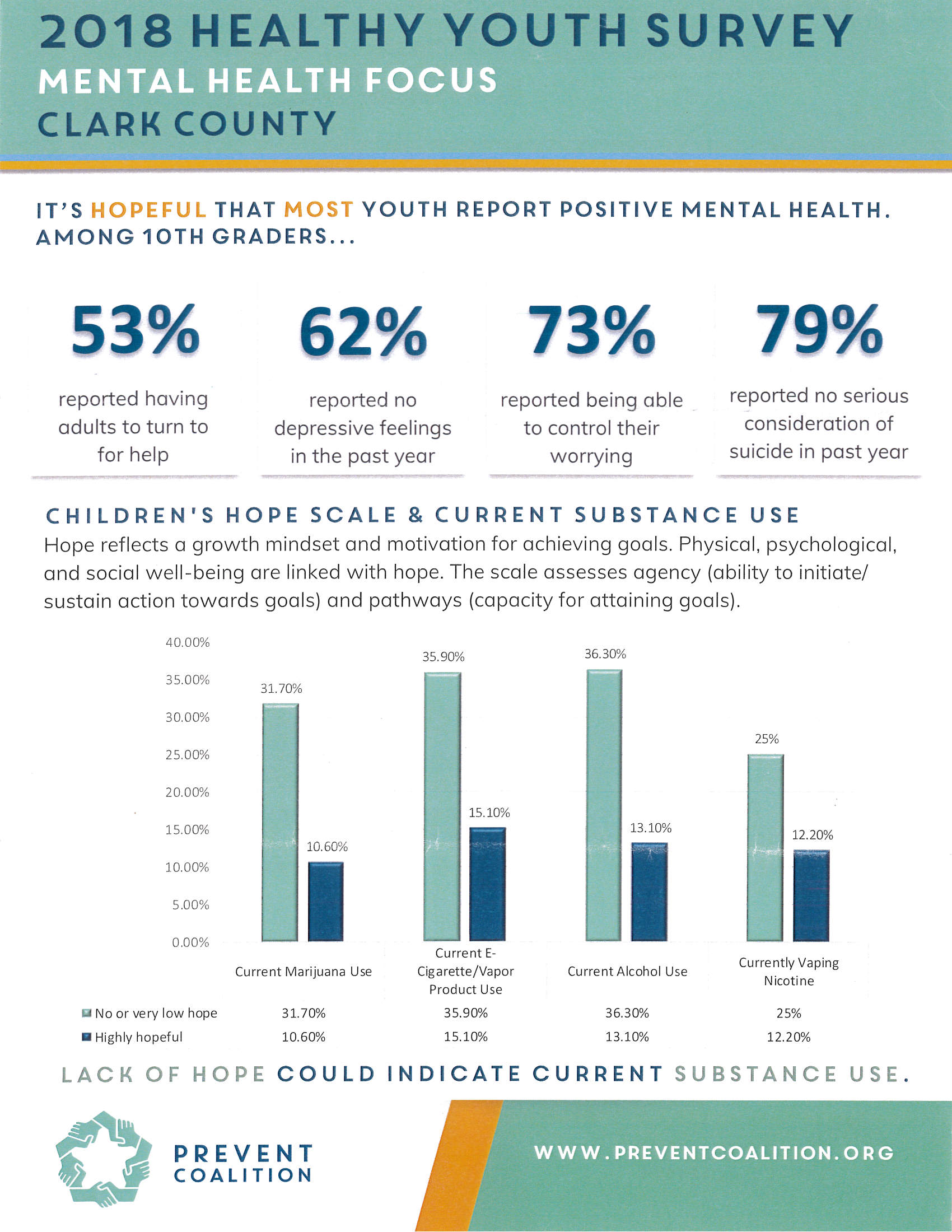Inspire others to raise awareness and take part in sharing information, resources and support for mental health conditions.
Mental Health Facts
- 1 in 5 U.S. adults experience mental illness each year
- 1 in 20 U.S. adults experience serious mental illness each year
- 1 in 6 U.S. youth aged 6-17 experience a mental health disorder each year
- 50% of all lifetime mental illness begins by age 14, and 75% by age 24
- Suicide is the 2nd leading cause of death among people aged 10-34
- The average delay between symptom onset and treatment is 11 years
- Additional facts and citations are available at Mental Health by the Numbers.
Demographics
- Annual prevalence of mental illness among U.S. adults, by demographic group:
- Non-Hispanic Asian: 14.4%
- Non-Hispanic white: 22.2%
- Non-Hispanic black or African-American: 17.3%
- Non-Hispanic American Indian or Alaska Native: 18.7%
- Non-Hispanic mixed/multiracial: 31.7%
- Non-Hispanic Native Hawaiian or Other Pacific Islander: 16.6%
- Hispanic or Latino: 18.0%
- Lesbian, Gay or Bisexual: 44.1%
Treatment
- 44.8% of U.S. adults with mental illness received treatment in 2019
- 65.5% of U.S. adults with serious mental illness received treatment in 2019
- 50.6% of U.S. youth aged 6-17 with a mental health disorder received treatment in 2016
- The average delay between onset of mental illness symptoms and treatment is 11 years
- Annual treatment rates among U.S. adults with any mental illness, by demographic group:
- 10.9% of U.S. adults with mental illness had no insurance coverage in 2019
- 11.9% of U.S. adults with serious mental illness had no insurance coverage in 2019
- 55% of U.S. counties do not have a single practicing psychiatrist
Suicide Stats
- Suicide is the 2nd leading cause of death among people aged 10-34 in the U.S.
- Suicide is the 10th leading cause of death in the U.S.
- The overall suicide rate in the U.S. has increased by 35% since 1999
- 46% of people who die by suicide had a diagnosed mental health condition
- 90% of people who die by suicide had shown symptoms of a mental health condition, according to interviews with family, friends and medical professionals (also known as psychological autopsy)
- Lesbian, gay and bisexual youth are 4x more likely to attempt suicide than straight youth
- 78% of people who die by suicide are male
- Transgender adults are nearly 12x more likely to attempt suicide than the general population
- Annual prevalence of serious thoughts of suicide, by U.S. demographic group:
Criminal Justice Stats
- About 2 million times each year, people with serious mental illness are booked into jails.
- About 2 in 5 people who are incarcerated have a history of mental illness (37% in state and federal prisons and 44% held in local jails).
- 66% of women in prison reported having a history of mental illness, almost twice the percentage of men in prison.
- Nearly one in four people shot and killed by police officers between 2015 and 2020 had a mental health condition.
- Suicide is the leading cause of death for people held in local jails.
- An estimated 4,000 people with serious mental illness are held in solitary confinement inside U.S. prisons.
- 70% of youth in the juvenile justice system have a diagnosable mental health condition.
- Youth in detention are 10 times more likely to suffer from psychosis than youth in the community.
- About 50,000 veterans are held in local jails — 55% report experiencing a mental illness.
- Among incarcerated people with a mental health condition, non-white individuals are more likely to go to solitary confinement, be injured, and stay longer in jail.
- About 3 in 5 people (63%) with a history of mental illness do not receive mental health treatment while incarcerated in state and federal prisons.
- Less than half of people (45%) with a history of mental illness receive mental health treatment while held in local jails.
- People who have healthcare coverage upon release from incarceration are more likely to engage in services that reduce recidivism.
What Is Stigma?
People experiencing mental health conditions often face rejection, bullying and even discrimination. This can make their journey to recovery longer and more difficult. Stigma is when someone, or you yourself, views you in a negative way because you have a mental health condition. Some people describe stigma as shame that can be felt as a judgement from someone else or a feeling that is internal, something that confuses feeling bad with being bad.
Navigating life with a mental health condition can be tough, and the isolation, blame and secrecy that is often encouraged by stigma can create huge challenges to reaching out, getting needed support and living well. Learning how to cope with stigma and how to avoid and address stigma are important for all of us.
